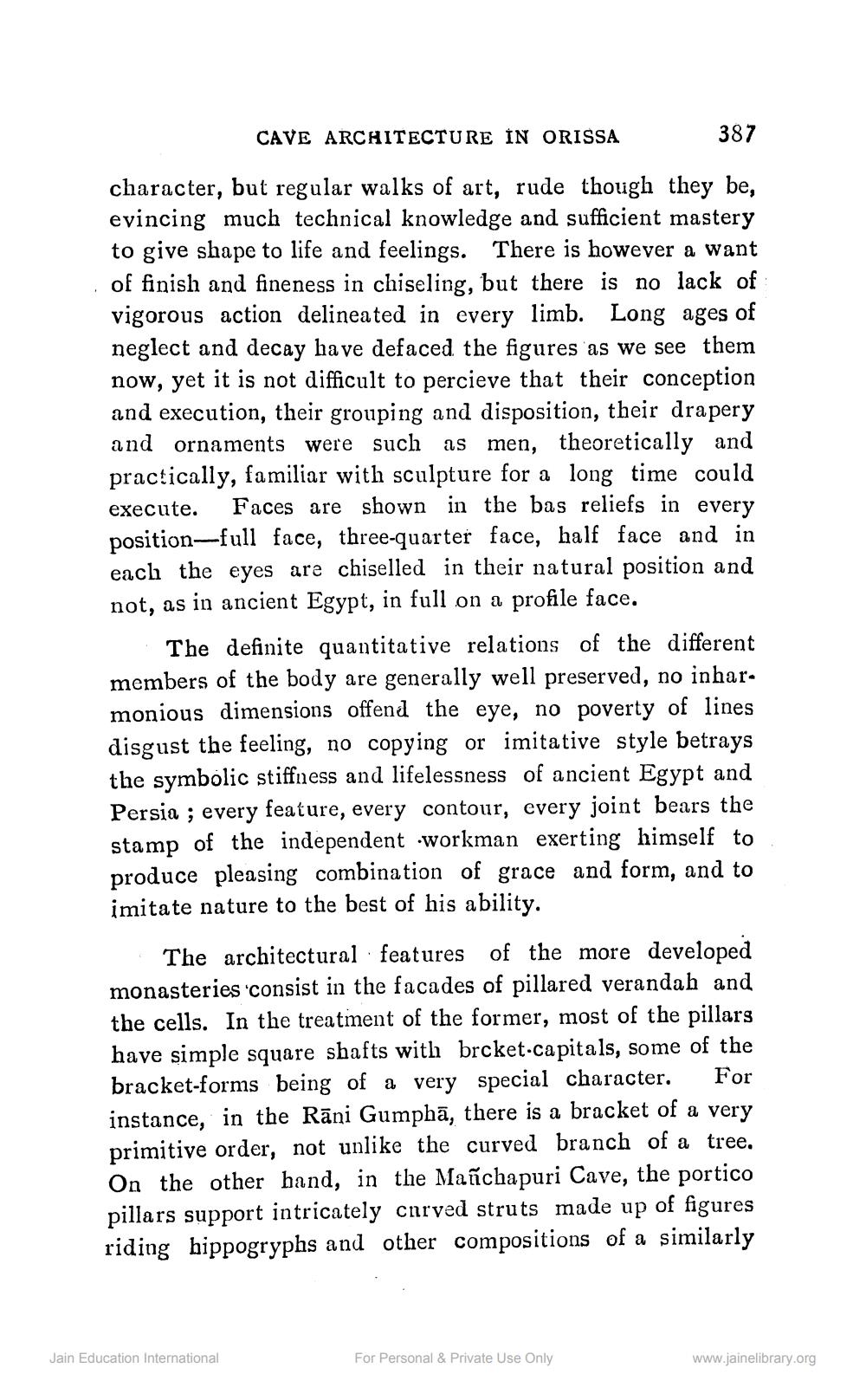________________
CAVE ARCHITECTURE ÎN ORISSA 387 character, but regular walks of art, rude though they be, evincing much technical knowledge and sufficient mastery to give shape to life and feelings. There is however a want of finish and fineness in chiseling, but there is no lack of vigorous action delineated in every limb. Long ages of neglect and decay have defaced the figures as we see them now, yet it is not difficult to percieve that their conception and execution, their grouping and disposition, their drapery and ornaments were such as men, theoretically and practically, familiar with sculpture for a long time could execute. Faces are shown in the bas reliefs in every position-full face, three-quarter face, half face and in each the eyes are chiselled in their natural position and not, as in ancient Egypt, in full on a profile face.
The definite quantitative relations of the different members of the body are generally well preserved, no inharmonious dimensions offend the eye, no poverty of lines disgust the feeling, no copying or imitative style betrays the symbolic stiffness and lifelessness of ancient Egypt and Persia ; every feature, every contour, every joint bears the stamp of the independent workman exerting himself to produce pleasing combination of grace and form, and to imitate nature to the best of his ability.
The architectural features of the more developed monasteries 'consist in the facades of pillared verandah and the cells. In the treatment of the former, most of the pillars have simple square shafts with brcket.capitals, some of the bracket-forms being of a very special character. For instance, in the Rāni Gumphā, there is a bracket of a very primitive order, not unlike the curved branch of a tree. On the other hand, in the Mañchapuri Cave, the portico pillars support intricately cnrved struts made up of figures riding hippogryphs and other compositions of a similarly
Jain Education International
For Personal & Private Use Only
www.jainelibrary.org




